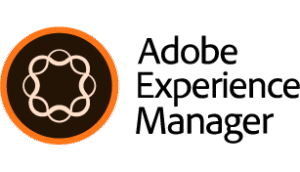In the cutthroat digital world of today, personalization is now expected rather than optional. One of the top content management systems, Adobe Experience Manager (AEM), helps businesses to provide users with experiences that are highly relevant and targeted. Here are the top 5 personalization techniques you should use with AEM as we enter 2025 in order to increase user engagement, increase conversions, and create enduring relationships with customers.
1. Behavioral Targeting Based on User Activity
What It Means: AEM has the ability to monitor user behavior on your website, including the pages they visit, the amount of time they spend there, and the actions they take. You can provide real-time, personalized content using this data.
Example Use Case: The next time a user visits, AEM can display additional articles, case studies, or service options pertaining to cloud computing if they have already spent time reading about cloud services.
2025 Tip: Use Adobe Analytics and AEM together to enable real-time content delivery and more precise behavioral segmentation.
2. Geo-Location-Based Personalization
What It Means: Depending on the user’s location, AEM enables you to deliver distinct content. Businesses with local services or international clientele will find this especially helpful.
Example Use Case: Depending on the user’s location, a retail website may show offers specific to a given region, the availability of local stores, and content tailored to a particular language.
2025 Tip: To improve geolocation tactics, particularly for mobile-first users, combine Adobe Target with AEM’s ContextHub.
3. Role-Based Personalization (B2B & B2C)
What It Means: Not all visitors are created equal; some may be business decision-makers, repeat customers, or first-time purchasers. AEM enables you to divide and customize content according to customer lifecycle stage or user role.
A B2B software company, for instance, can display distinct calls to action (CTAs) for developers (“See Developer Docs”) and decision-makers (“Request a Demo”).
2025 Tip: Customize using account-level data by utilizing AEM user profiles and integrations with CRMs such as Salesforce.
4. AI-Powered Content Recommendations
What It Means:
AEM can be integrated with Adobe Sensei (AI & ML engine) to automatically recommend content based on a user’s preferences, past behavior, and similar audience patterns.
Example Use Case:
A streaming platform using AEM can show personalized video recommendations based on a user’s viewing habits and what’s trending among similar users.
2025 Tip:
Use Adobe Sensei in tandem with Adobe Target to continuously optimize and test AI-driven content blocks.
5. Personalized Email and Multi-Channel Campaigns
What It Means: AEM’s smooth integration with Adobe Campaign enables you to personalize emails, push notifications, and other content in addition to the website.
Example Use Case: A user who is looking at winter jackets on the website gets a customized email with deals and accessories.
2025 Tip: Make sure all channels are consistent and tailor the design and tone in addition to the content according to user personas.
Conclusion
In 2025 and beyond, user engagement and retention depend heavily on personalization. You can create extremely relevant, context-aware experiences throughout the customer journey with AEM’s powerful tools and Adobe’s integrated ecosystem.
FAQs
1. Why is personalization important in AEM?
Because it improves engagement, increases conversions, and helps deliver user-specific content at the right time.
2. Do I need coding to personalize content in AEM?
No, AEM offers low-code/no-code tools like ContextHub and Target integrations for personalization.
3. How does AEM collect user behavior data?
It integrates with Adobe Analytics and uses cookies, session data, and other digital footprints.
4. Can I use AEM for personalization across channels?
Yes, AEM works with Adobe Campaign, Adobe Target, and other tools for multi-channel personalization.
5. What industries benefit most from AEM personalization?
E-commerce, education, media, healthcare, and B2B enterprises are the top beneficiaries.

